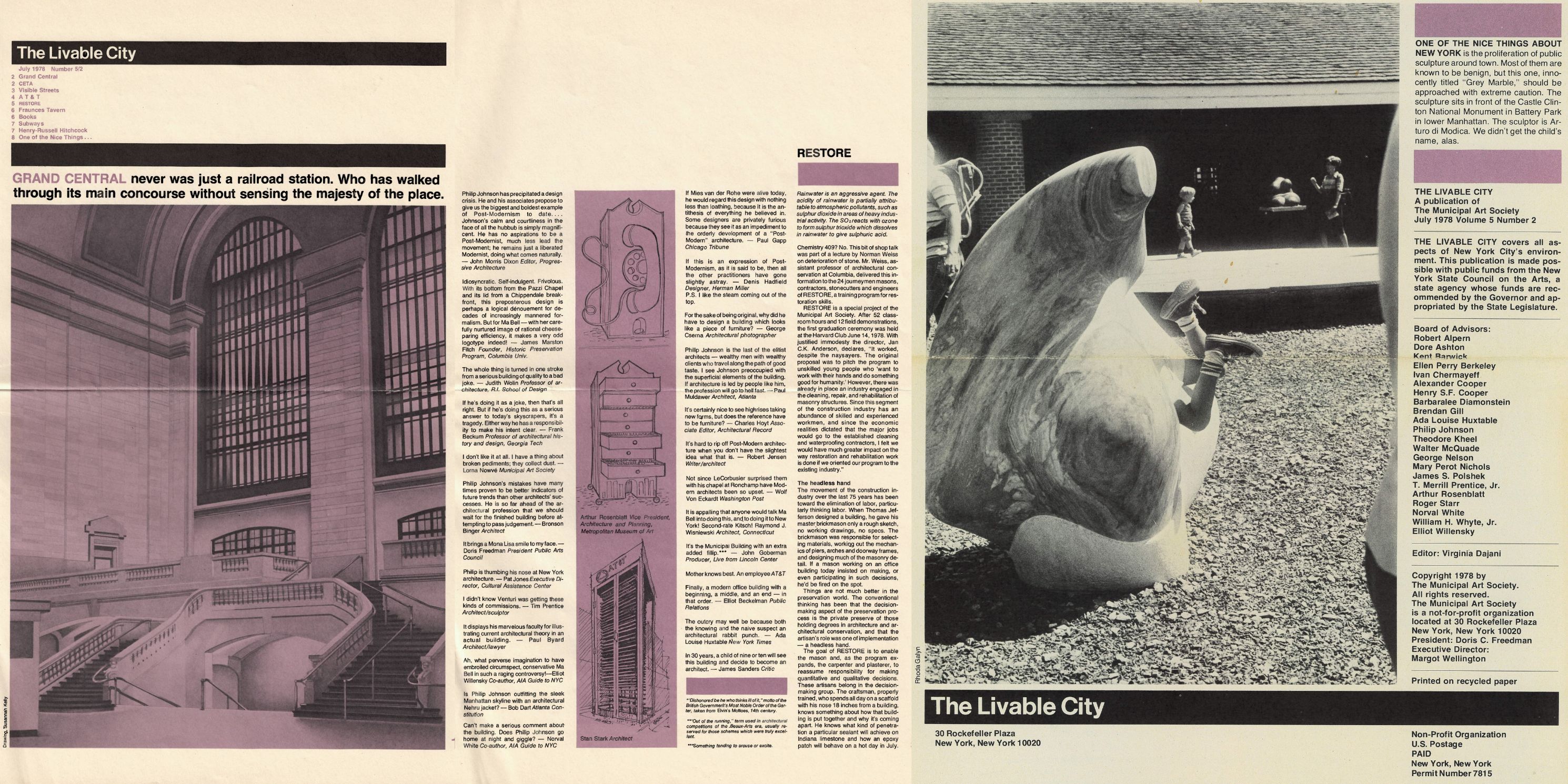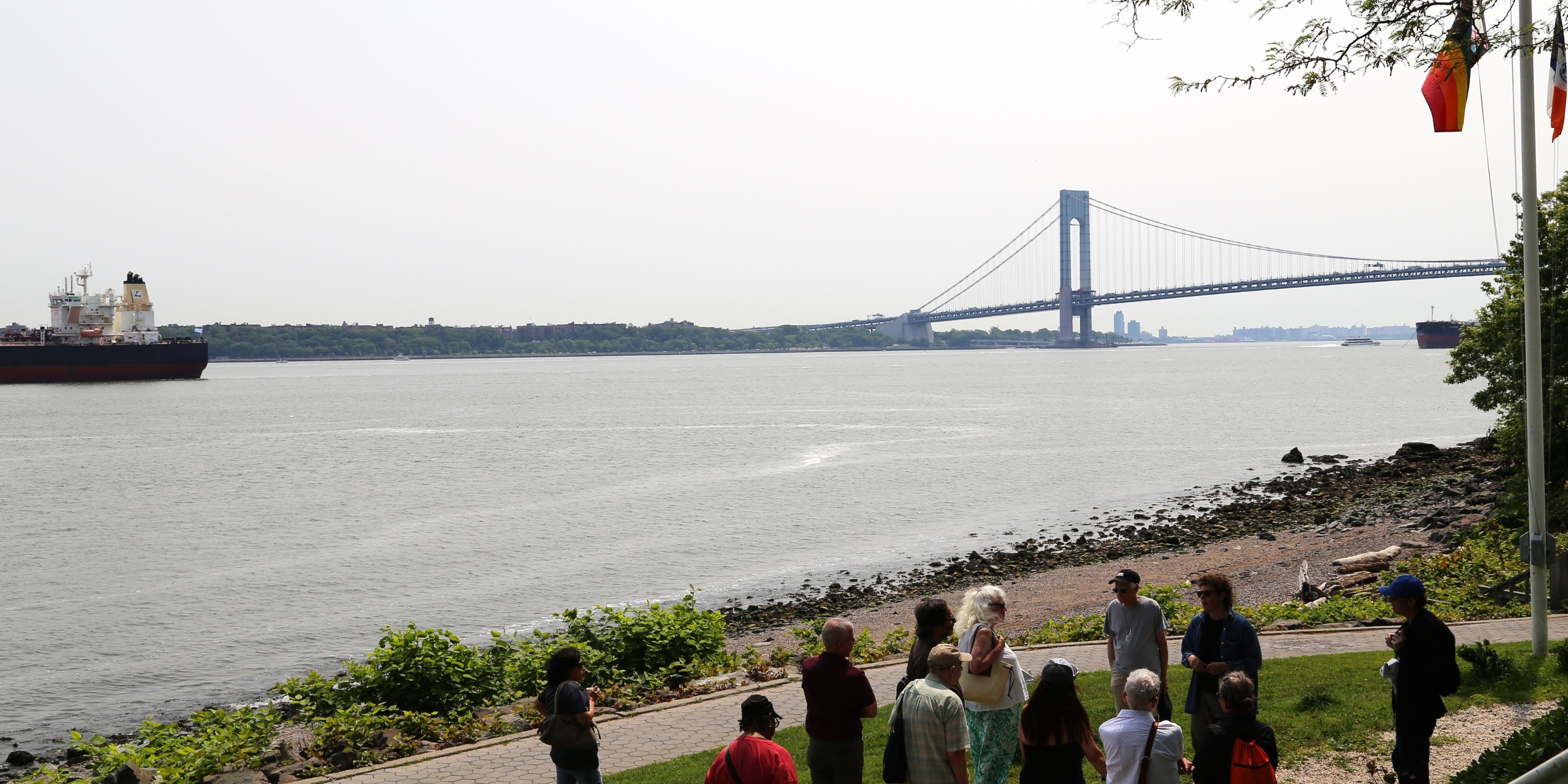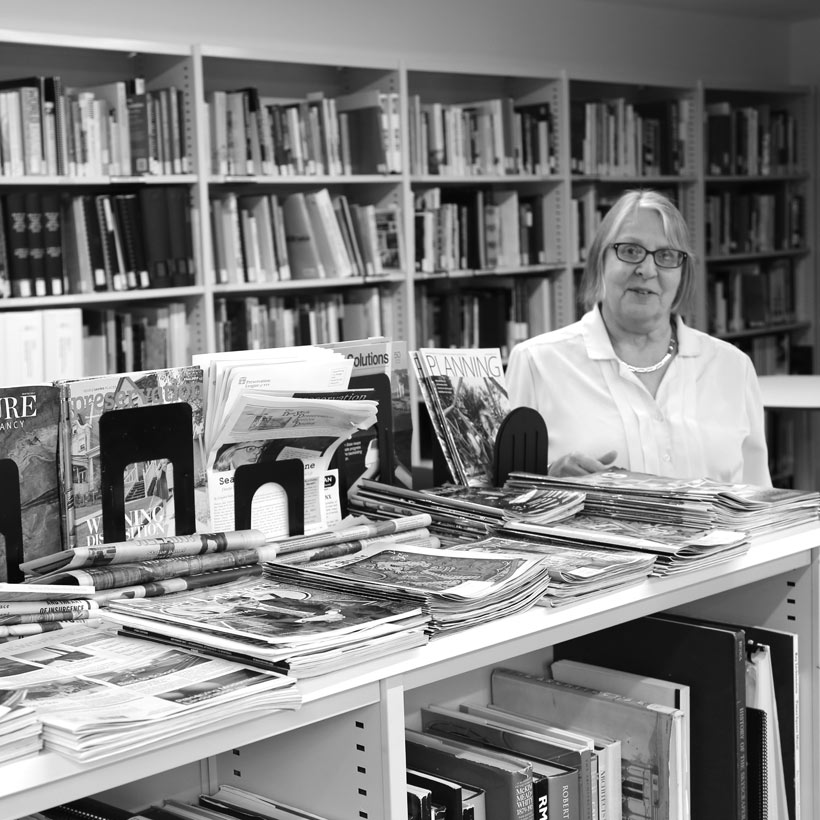How dirty, noisy, and fun was New York City 47 years ago?
It’s July 1978. We’re reading the Municipal Art Society’s latest edition of The Livable City.*
● Nine years. Four court battles. U.S. Supreme Court upholds New York City’s Landmark Law. Grand Central Terminal is saved!
● MAS’s “Visible Streets Project” launches to clean and restore the Park Avenue viaduct leading into Grand Central. Private money and Highway Department funds it. Next, Brooklyn: MAS joins Fulton Mall Improvement Association to design murals for shop security gates.
● NYC activates federally-funded Comprehensive Education and Training Act program. Reviews are mixed, but CETA hires 600 unemployed artists to perform, design, make art, and educate!
● CETA artists join MTA, MAS, and Public Arts Fund kickstarting “Platforms for Design” to rehabilitate and enhance several subway stations.
● Noise abatement for five subway stations in four boroughs is 88% complete. Unsatisfied, the Big Screechers organization pushes to fit every car in the system with “ring-damp wheels,” technology used in London since the 1930s.
● The Landmarks Conservancy** acquires five historic downtown buildings, preventing demolition. Complicated real estate transactions secure future for Fraunces Tavern Block.
● Public art swallows child!

The MAS Archives and Greenacre Reference Library are both open to the public by appointment. For more information, contact Erin Butler, ebutler@mas.org, 212-935-3960. For links to our online catalogs, see: Greenacre Reference Library & MAS Archives – The Municipal Art Society of New York.
*The Municipal Art Society of New York published its periodical The Livable City from May 1974 through Fall 1994, with two later editions in 2000 and 2002. A wide range of topics and events were covered, but more often, the focus narrowed to express multiple viewpoints on a prominent issue related to New York City’s physical environment.
Issues tackled included: the waterfront, transportation, garbage, manufacturing industries, housing of all types, homesteading and homelessness, restoration of monuments, air quality, demographics and immigration, air rights, land use law, including specifically for religious institutions, and infrastructure. Places like the South Bronx and Columbus Circle were covered in depth. The final edition, “Community-Based Planning: Building on Local Knowledge” was published under the auspices of The Planning Center of The Municipal Art Society of New York.
A total of 40 tabloid-format editions were published, 38 printed in duotone on recycled paper and the last two in full color on glossy paper. From 1974 through 1989 the Editor was Virginia Dajani, followed by Amy Rowland and a series of Guest Editors, among them Todd W. Bressi.
**The Landmarks Conservancy was founded in 1973. The idea of forming it had been discussed at meetings of the Municipal Art Society Board of Directors since 1970.

